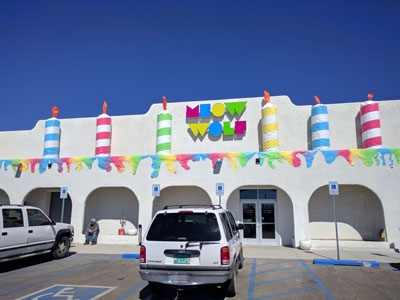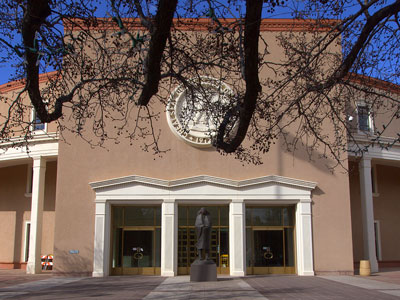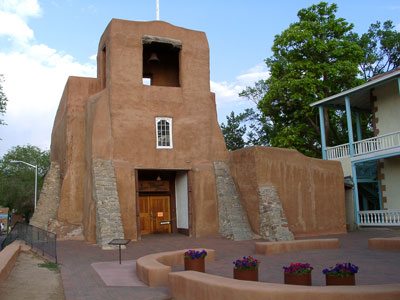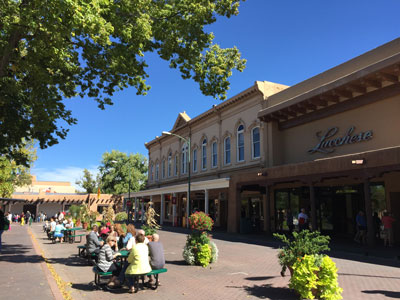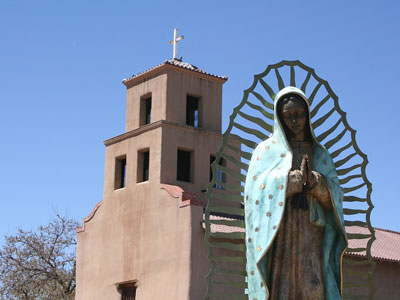Santa Fe Travel Guide
Capital of New Mexico and founded in 1610 as the capital of Nuevo México, making it the oldest state capital in the US, it is also the state capital with the highest elevation and considered one of the world's great art cities, due to its many art galleries and installations
Places to See in Santa Fe
Overview
Santa Fe (Spanish for "Holy Faith"; Tewa: Oghá P'o'oge; Northern Tiwa: Hulp'ó'ona; Navajo: Yootó) is the capital of the state of New Mexico. The city was founded in 1610 as the capital of Nuevo México, after it replaced Española as capital, which makes it the oldest state capital in the United States. With an elevation of 7,199 feet (2,194 m), it is also the state capital with the highest elevation.
It is considered one of the world's great art cities, due to its many art galleries and installations, and is recognized by UNESCO's Creative Cities Network. Cultural highlights include Santa Fe Plaza and the Palace of the Governors, and the Fiesta de Santa Fe, as well as distinct New Mexican cuisine restaurants and New Mexico music performances. Among the numerous art galleries and installations are, for example, the Georgia O'Keeffe Museum, as is a gallery by cartoonist Chuck Jones, along with newer art collectives such as Meow Wolf.
The area surrounding Santa Fe was occupied for at least several thousand years by indigenous people who built villages several hundred years ago on the current site of the city. It was known by the Tewa inhabitants as Ogha Po'oge ("White Shell Water Place"). The name of the city of Santa Fe means "Holy Faith" in Spanish, and the city's full name as founded remains La Villa Real de la Santa Fe de San Francisco de Asís ("The Royal Town of the Holy Faith of Saint Francis of Assisi").
Spanish and Pueblo influences
The Spanish laid out the city according to the "Laws of the Indies", town planning rules and ordinances which had been established in 1573 by King Philip II. The fundamental principle was that the town be laid out around a central plaza. On its north side was the Palace of the Governors, while on the east was the church that later became the Cathedral Basilica of Saint Francis of Assisi.
An important style implemented in planning the city was the radiating grid of streets centered on the central Plaza. Many were narrow and included small alley-ways, but each gradually merged into the more casual byways of the agricultural perimeter areas. As the city grew throughout the 19th century, the building styles evolved too, so that by statehood in 1912, the eclectic nature of the buildings caused it to look like "Anywhere USA". The city government realized that the economic decline, which had started more than twenty years before with the railway moving west and the federal government closing down Fort Marcy, might be reversed by the promotion of tourism.
To achieve that goal, the city created the idea of imposing a unified building style - the Spanish Pueblo Revival look, which was based on work done restoring the Palace of the Governors. The sources for this style came from the many defining features of local architecture: vigas (rough, exposed beams that extrude through supporting walls, and are thus visible outside as well as inside the building) and canales (rain spouts cut into short parapet walls around flat roofs), features borrowed from many old adobe homes and churches built many years before and found in the Pueblos, along with the earth-toned look (reproduced in stucco) of the old adobe exteriors.
After 1912 this style became official: all buildings were to be built using these elements. By 1930 there was a broadening to include the "Territorial", a style of the pre-statehood period which included the addition of portales (large, covered porches) and white-painted window and door pediments (and also sometimes terra cotta tiles on sloped roofs, but with flat roofs still dominating). The city had become "different". However, "in the rush to pueblofy" Santa Fe, the city lost a great deal of its architectural history and eclecticism. Among the architects most closely associated with this new style are T. Charles Gaastra and John Gaw Meem.
By an ordinance passed in 1957, new and rebuilt buildings, especially those in designated historic districts, must exhibit a Spanish Territorial or Pueblo style of architecture, with flat roofs and other features suggestive of the area's traditional adobe construction. However, many contemporary houses in the city are built from lumber, concrete blocks, and other common building materials, but with stucco surfaces (sometimes referred to as "faux-dobe", pronounced as one word: "foe-dough-bee") reflecting the historic style.
The city is well known as a center for arts that reflect the multicultural character of the city; it has been designated as a UNESCO Creative City in Design, Crafts and Folk Art.
Canyon Road, east of the Plaza, has the highest concentration of art galleries in the city, and is a major destination for international collectors, tourists and locals. The Canyon Road galleries showcase a wide array of contemporary, Southwestern, indigenous American, and experimental art, in addition to Russian, Taos Masters, and Native American pieces.
Since its opening in 1995, SITE Santa Fe has been committed to supporting new developments in contemporary art, encouraging artistic exploration, and expanding traditional museum experiences. Launched in 1995 to organize the only international biennial of contemporary art in the United States, SITE Santa Fe has drawn global attention. The biennials are on par with such renowned exhibitions as the Whitney Biennial and the Venice Biennale.
Santa Fe contains a lively contemporary art scene, with Meow Wolf as its main art collective. Backed by author George R. R. Martin, Meow Wolf opened an elaborate art installation space, called House of Eternal Return, in 2016.
There are many outdoor sculptures, including many statues of Francis of Assisi, and several other holy figures, such as Kateri Tekakwitha. The styles run the whole spectrum from Baroque to Post-modern.
Santa Fe has many museums located near the downtown Plaza:
- New Mexico Museum of Art - collections of modern and contemporary Southwestern art
- Museum of Contemporary Native Arts - contemporary Native American arts with political aspects
- Georgia O'Keeffe Museum - devoted to the work of O'Keeffe and others whom she influenced
- New Mexico History Museum - located behind the Palace of the Governors
- Site Santa Fe - a contemporary art space
- Museum of International Folk Art - folk art from around the world
- Museum of Indian Arts and Culture - Native American arts
- Wheelwright Museum of the American Indian - Native American art and history
- Museum of Spanish Colonial Art - Tradition arts from the Spanish-colonial era to contemporary times
Tourism is a major element of the Santa Fe economy, with visitors attracted year-round by the climate and related outdoor activities (such as skiing in years of adequate snowfall; hiking in other seasons) plus cultural activities of the city and the region.
Most tourist activity takes place in the historic downtown, especially on and around the Plaza, a one-block square adjacent to the Palace of the Governors, the original seat of New Mexico's territorial government since the time of Spanish colonization. Other areas include "Museum Hill", the site of the major art museums of the city as well as the Santa Fe International Folk Art Market, which takes place each year during the second full weekend of July. The Canyon Road arts area with its galleries is also a major attraction for locals and visitors alike.
Some visitors find Santa Fe particularly attractive around the second week of September when the aspens in the Sangre de Cristo Mountains turn yellow and the skies are clear and blue. This is also the time of the annual Fiestas de Santa Fe, celebrating the "reconquering" of Santa Fe by Don Diego de Vargas, a highlight of which is the burning Zozobra ("Old Man Gloom"), a 50-foot (15 m) marionette.
Popular day trips in the Santa Fe area include locations such as the town of Taos, about 70 mi (113 km) north of Santa Fe. The historic Bandelier National Monument and the Valles Caldera can be found about 30 mi (48 km) away. Santa Fe's ski resort, Ski Santa Fe, is about 16 mi (26 km) northeast of the city. Chimayo is also nearby and many locals complete the annual pilgrimage to the Santuario de Chimayo.
- El Santuario de Guadalupe, 100 S. Guadalupe St. (downtown), is the oldest extant shrine to the Virgin of Guadalupe in the United States
- New Mexico State Capitol
- Cathedral Basilica of Saint Francis of Assisi, the mother church of the Roman Catholic Archdiocese of Santa Fe
- Loretto Chapel
- Palace of the Governors
- San Miguel Mission and the rest of the Barrio De Analco Historic District
- Santuario de Guadalupe
- De Vargas Street House
- New Mexico Governor's Mansion
- Barrio De Analco Historic District
- Don Gaspar Historic District
- Santa Fe Historic District
- Santa Fe Railyard arts district
This article uses material from the Wikipedia article "Santa Fe, New Mexico", which is released under the Creative Commons Attribution-Share-Alike License 3.0
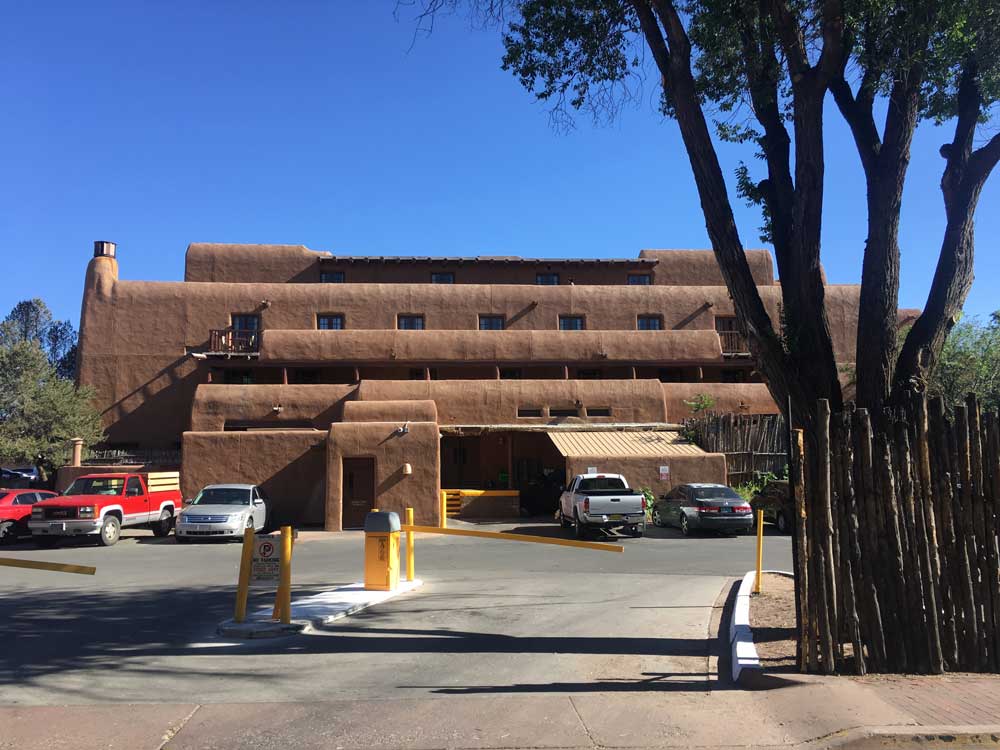
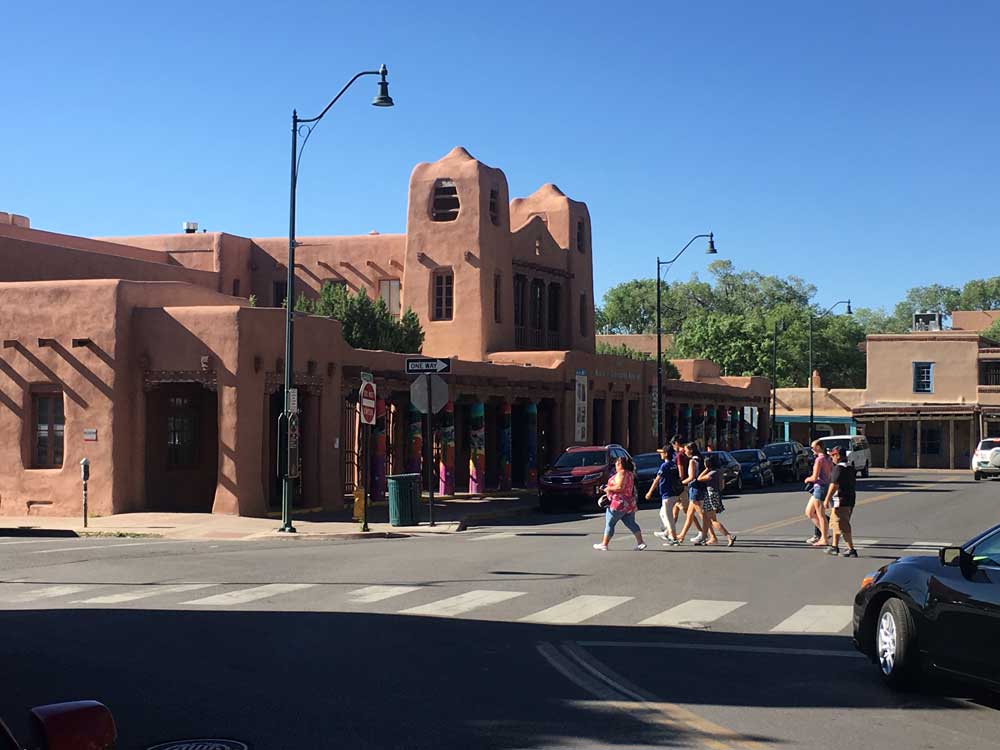
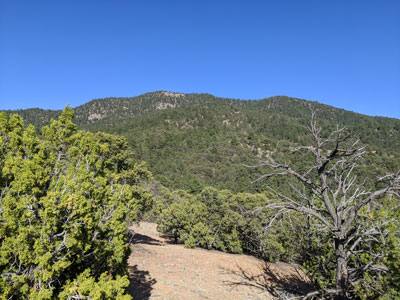
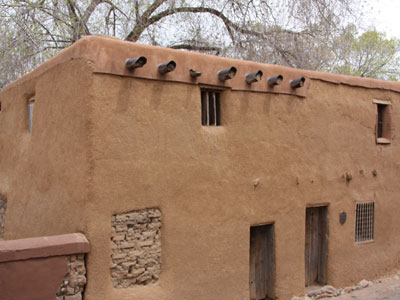
-400.jpg)
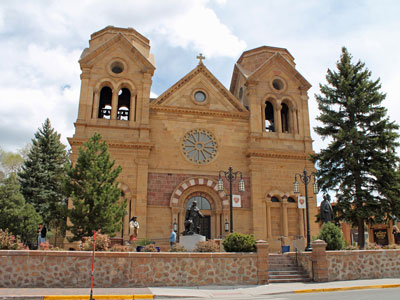
-400.jpg)
_-_panoramio-400.jpg)
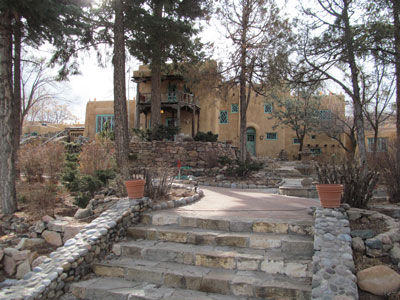
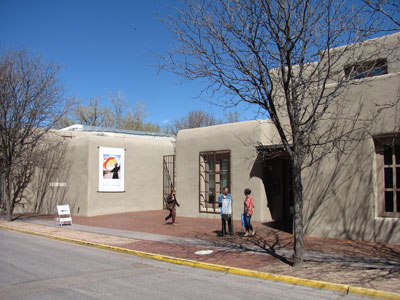
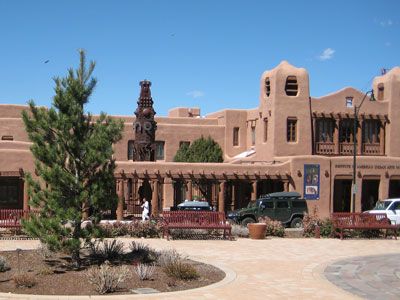
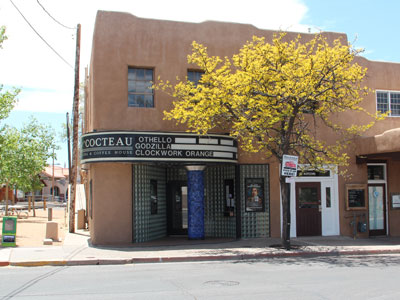
-400.jpg)

